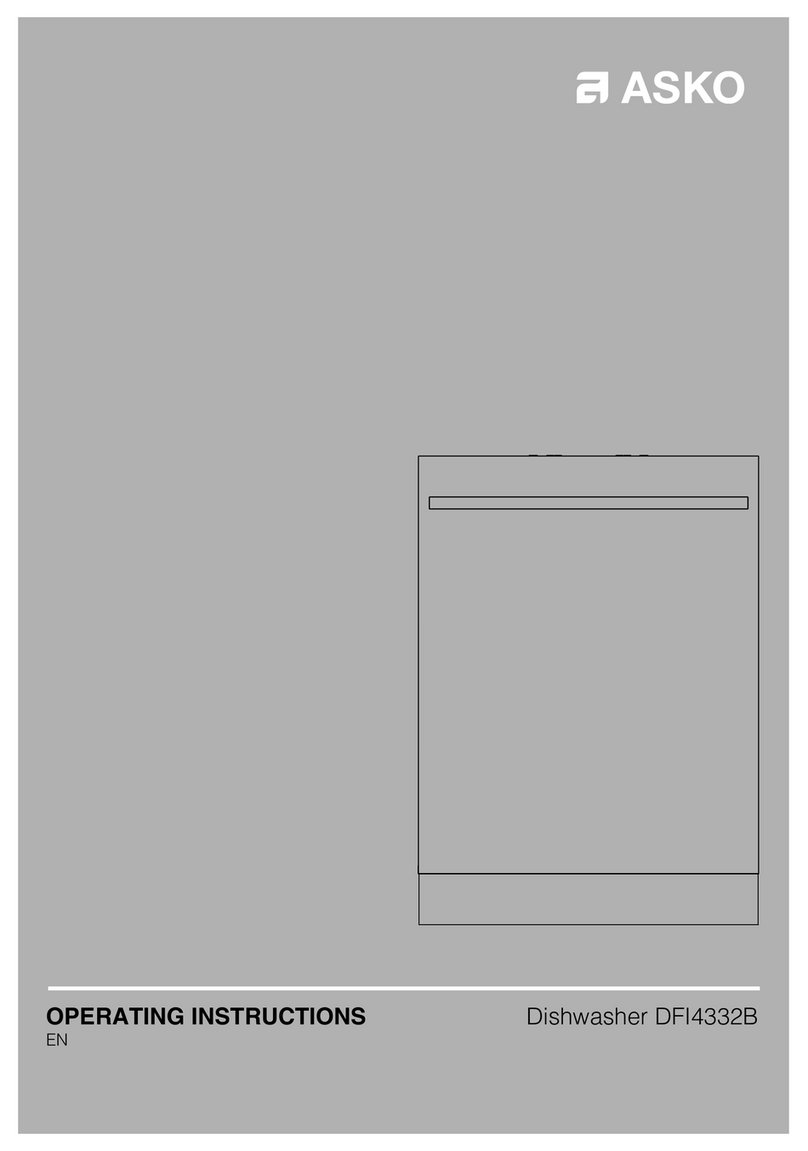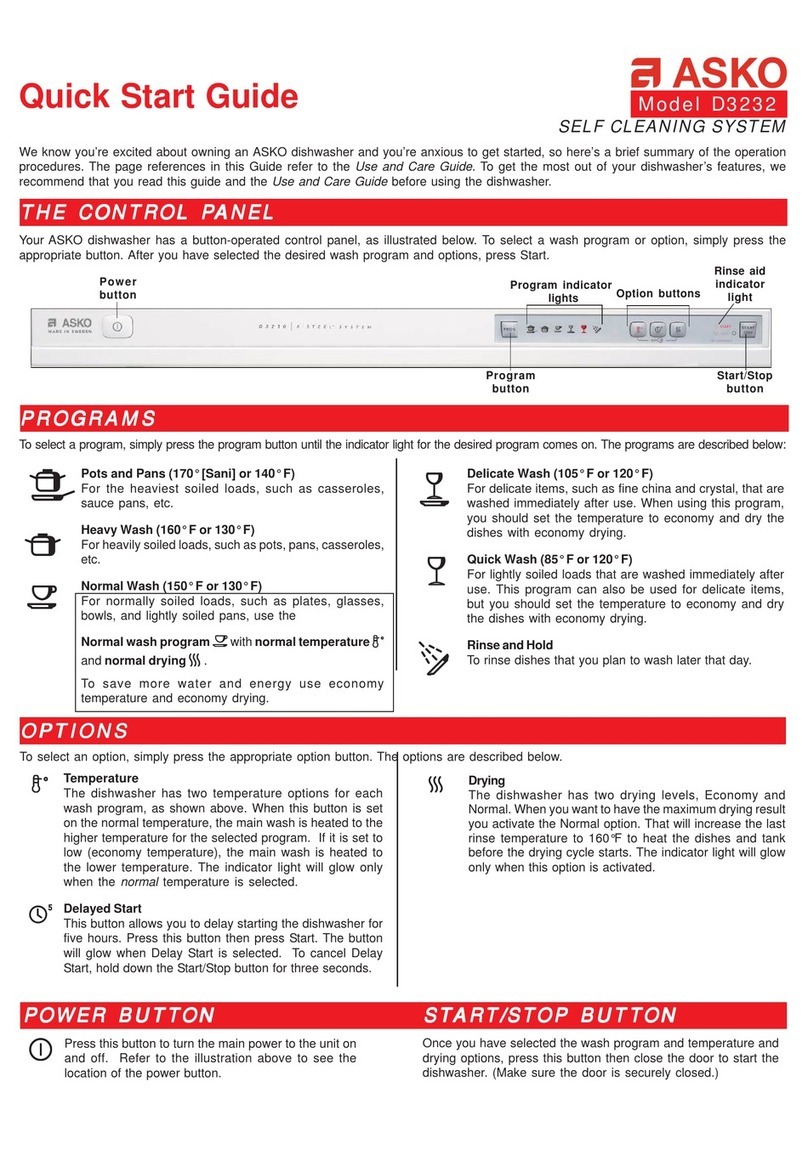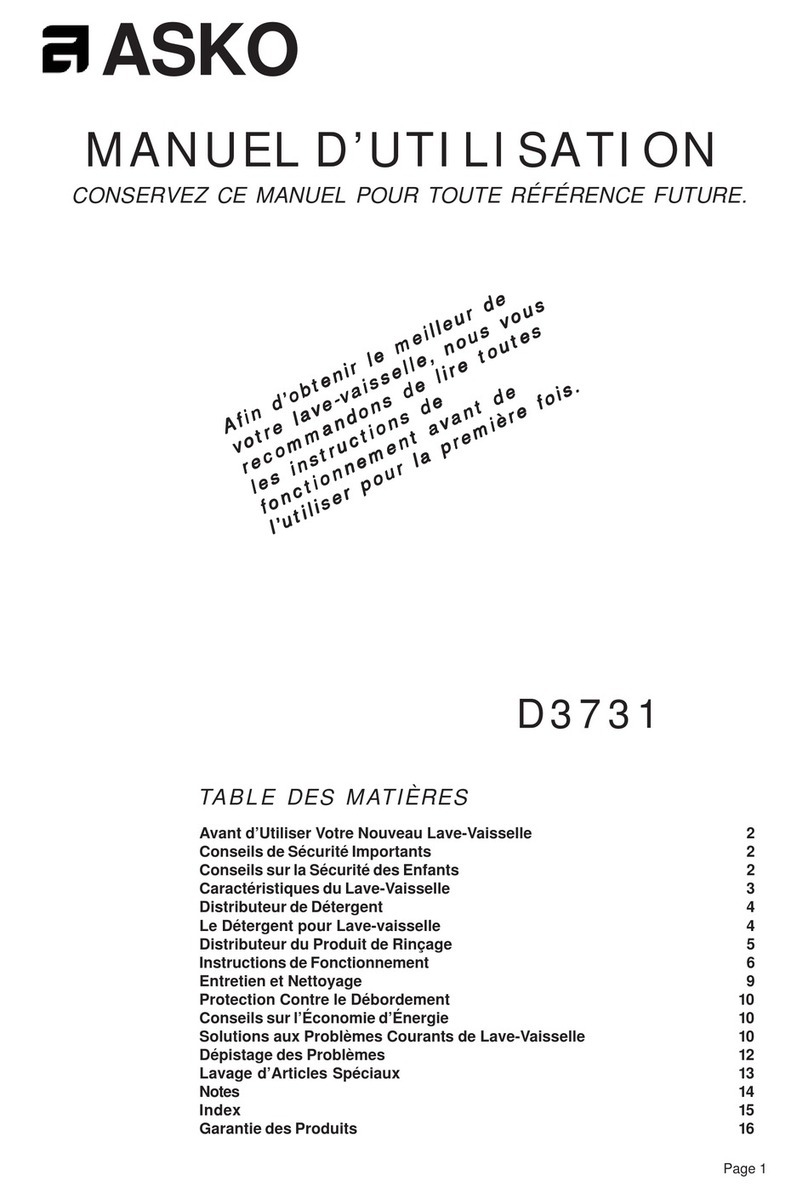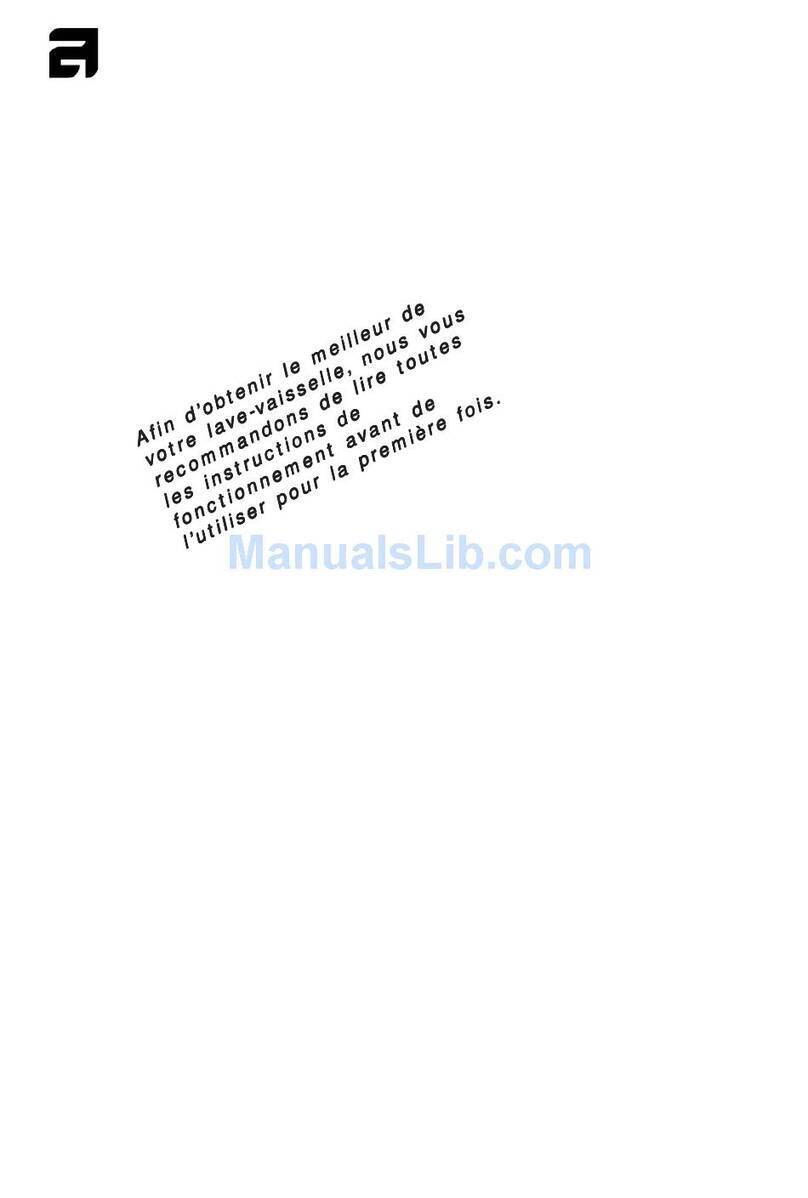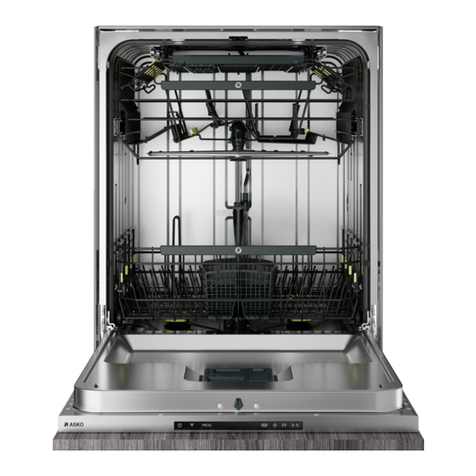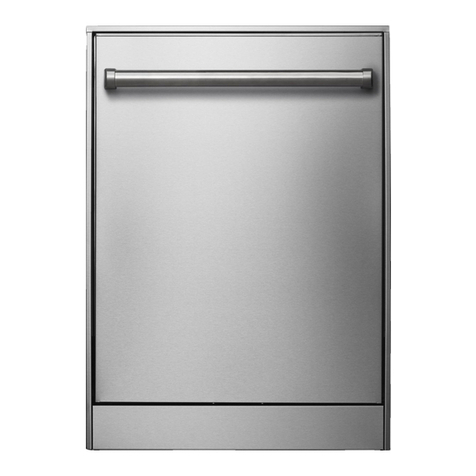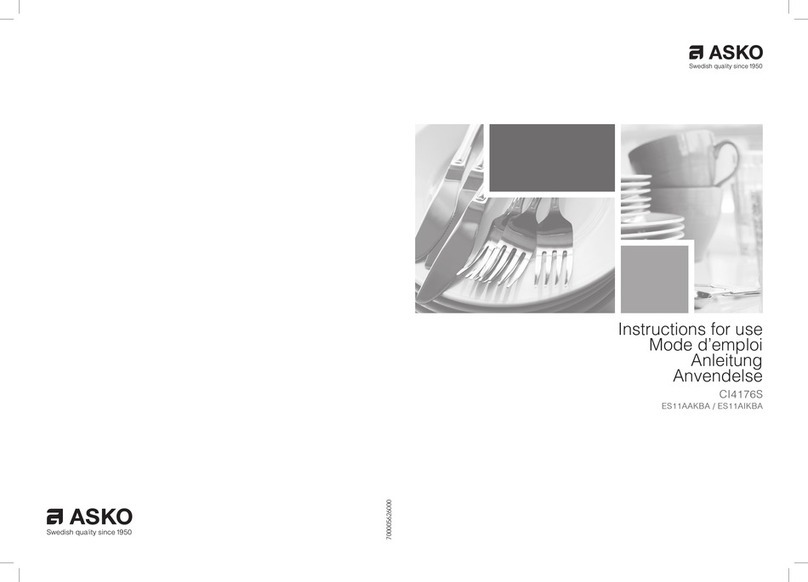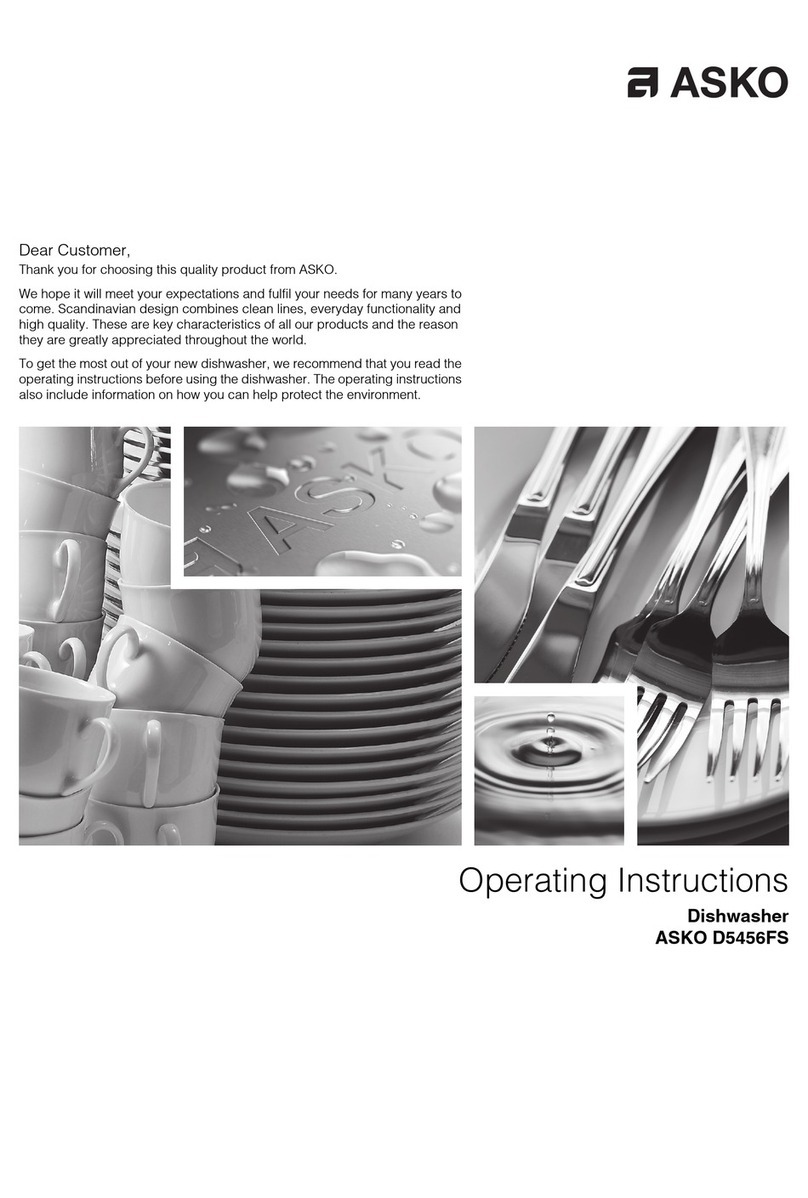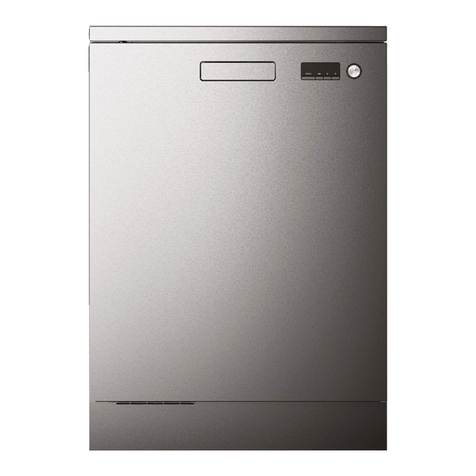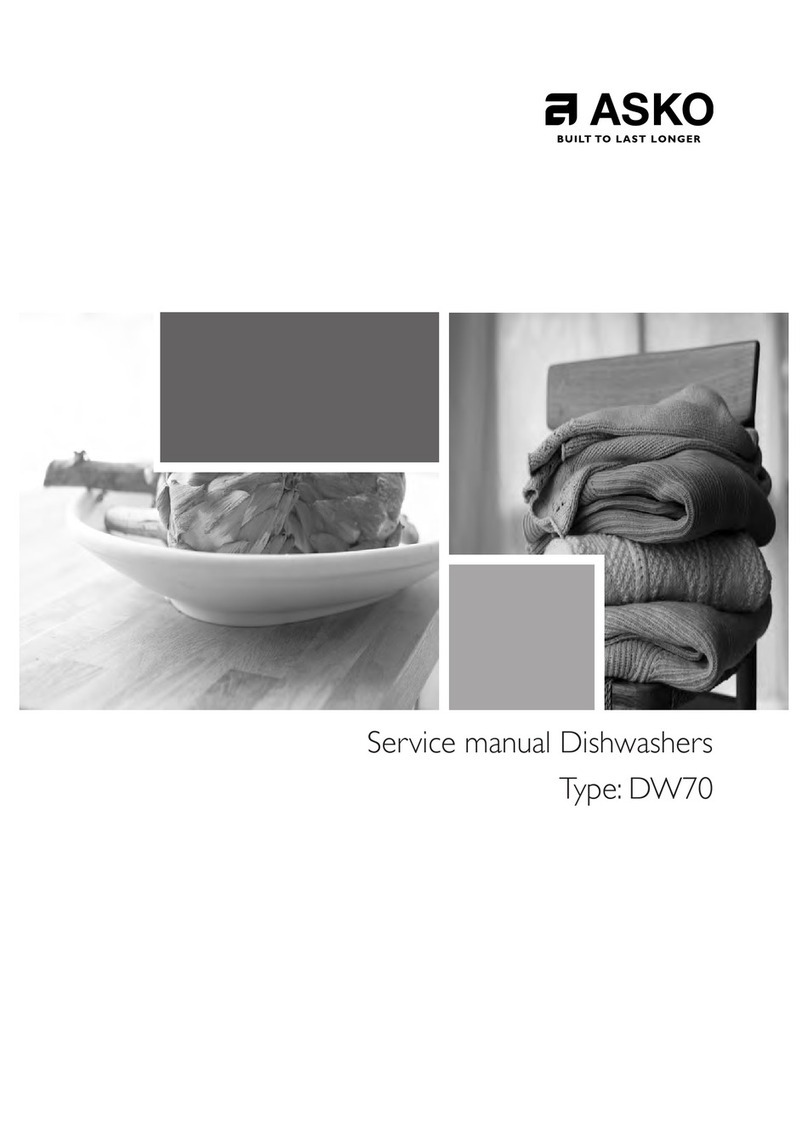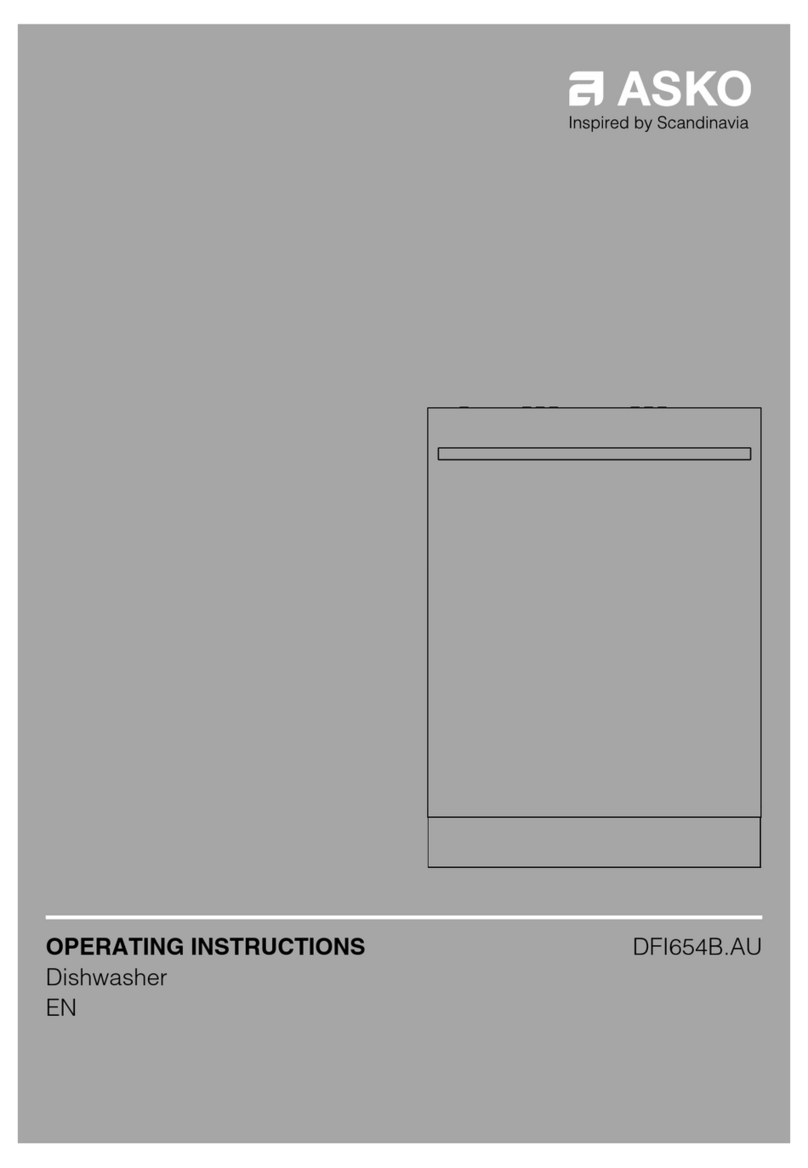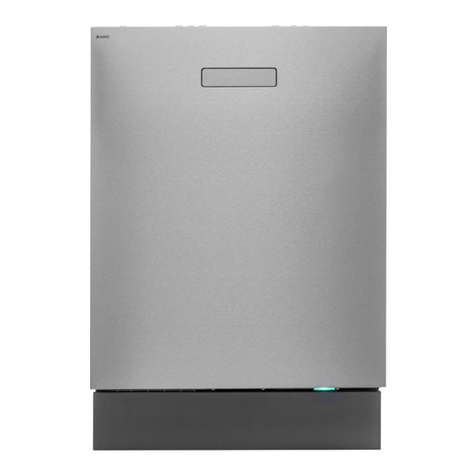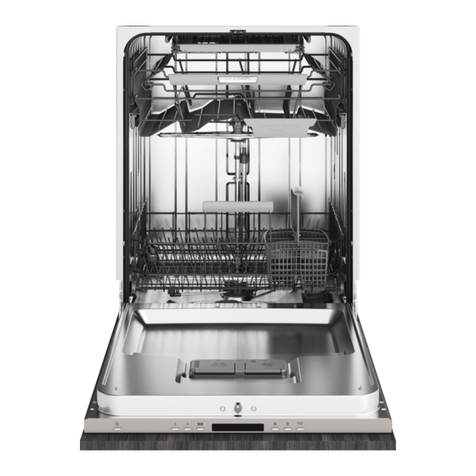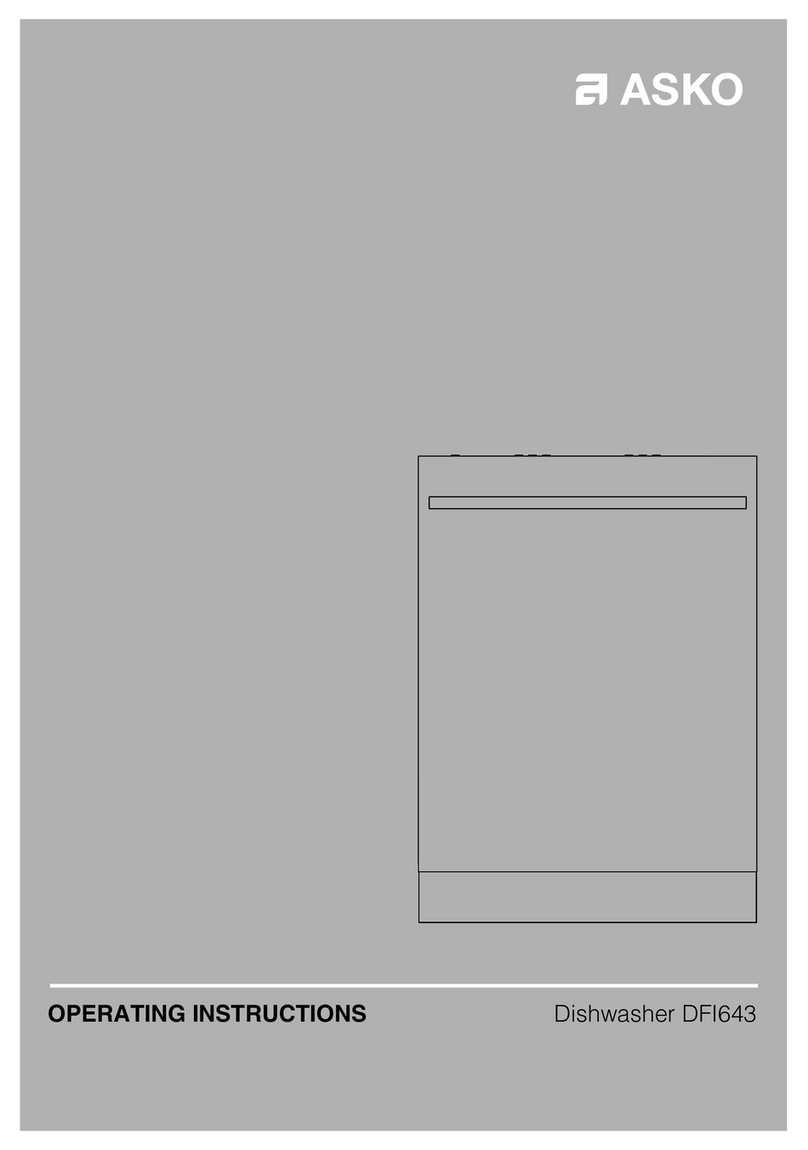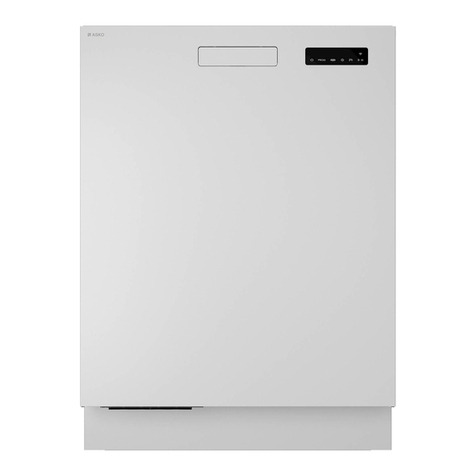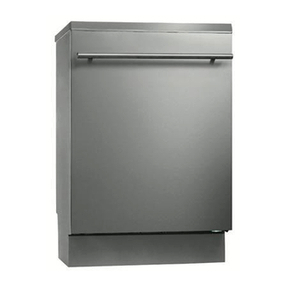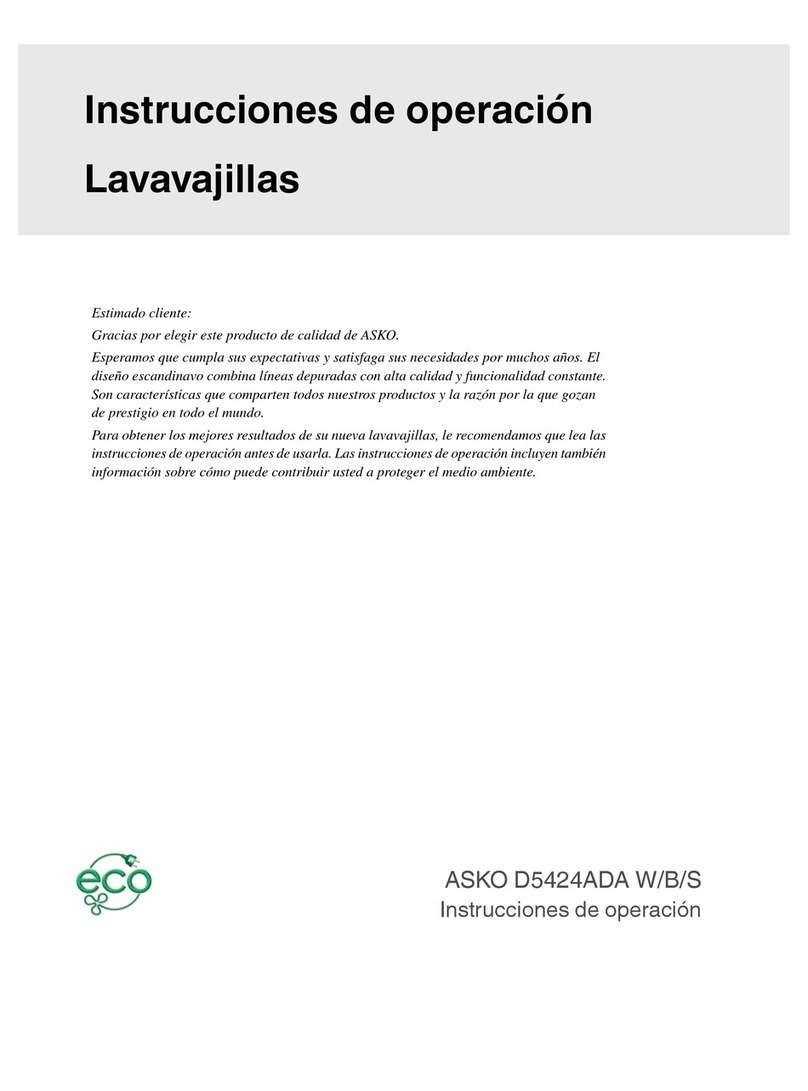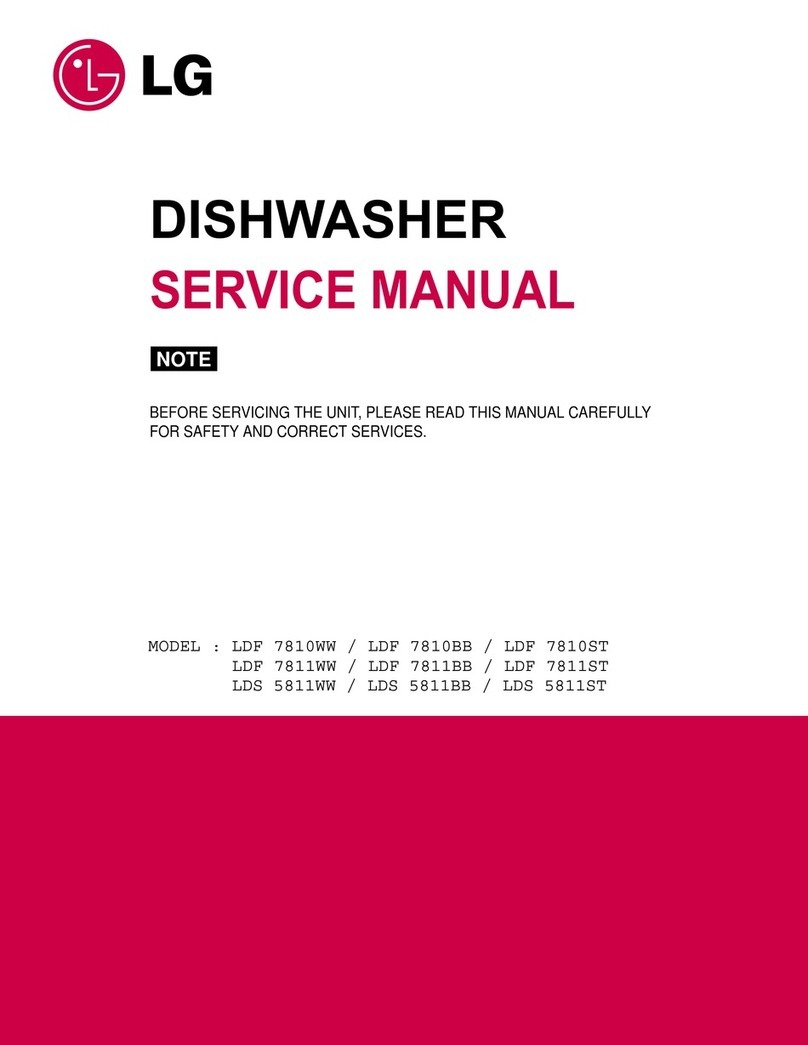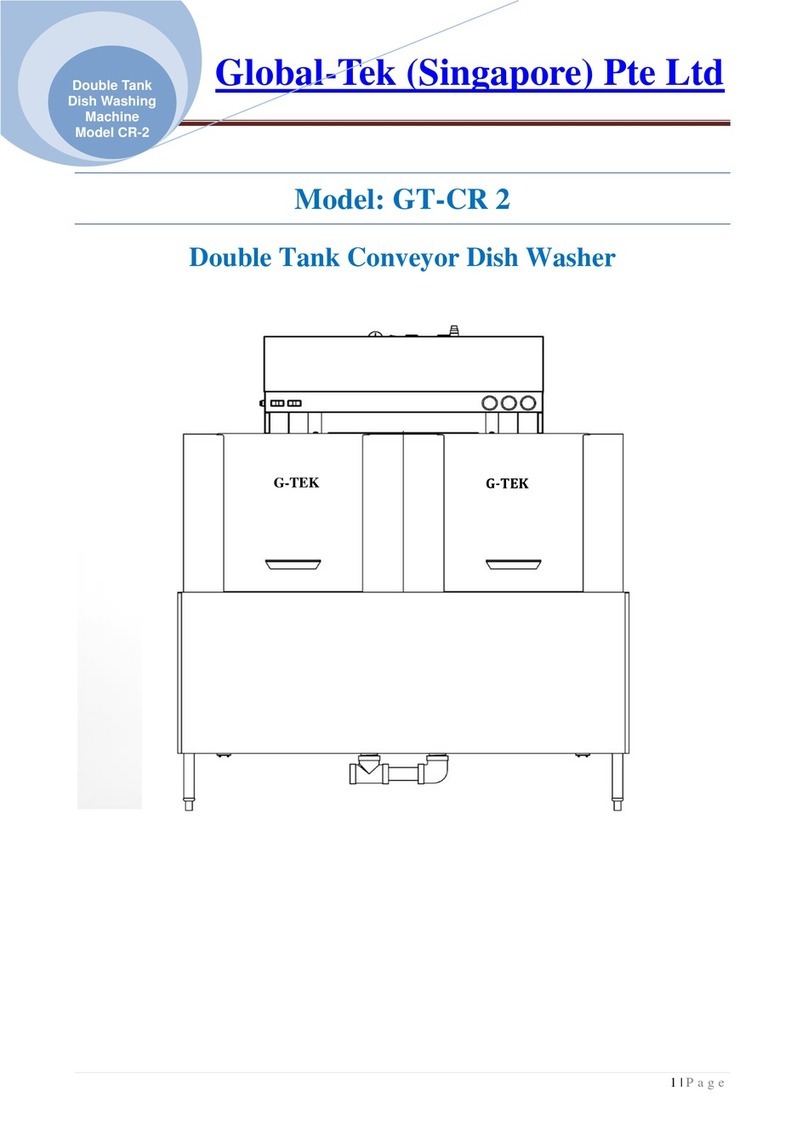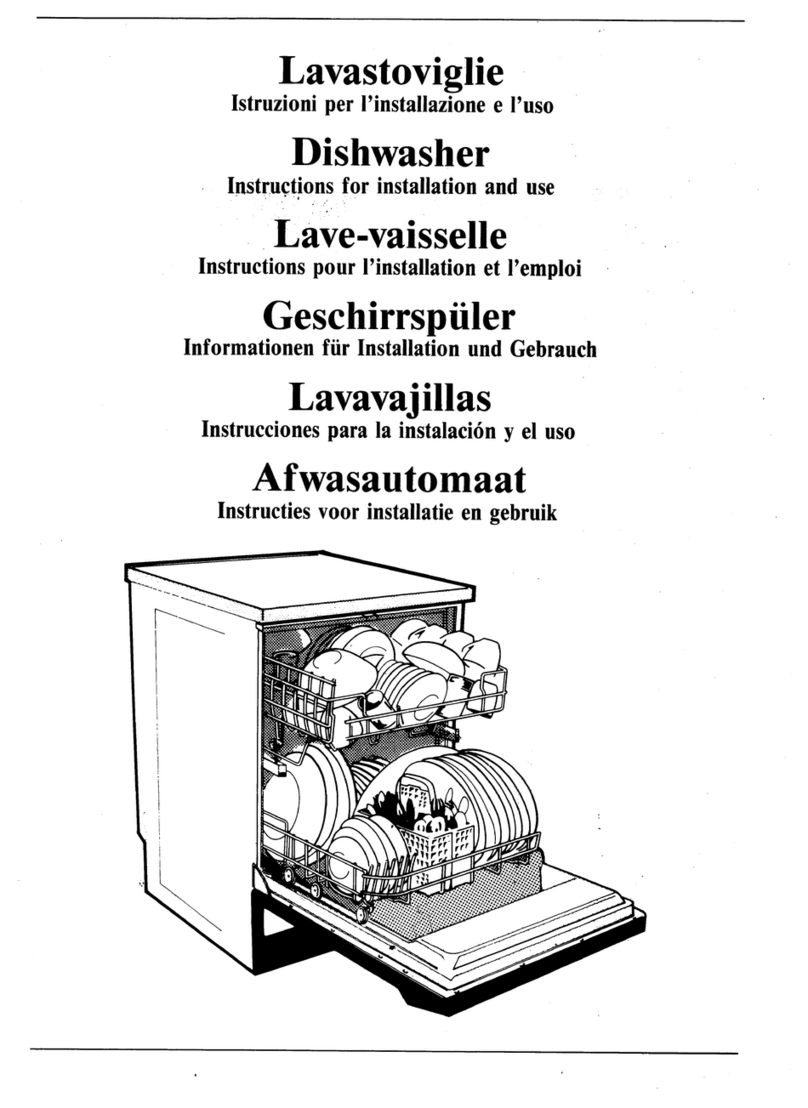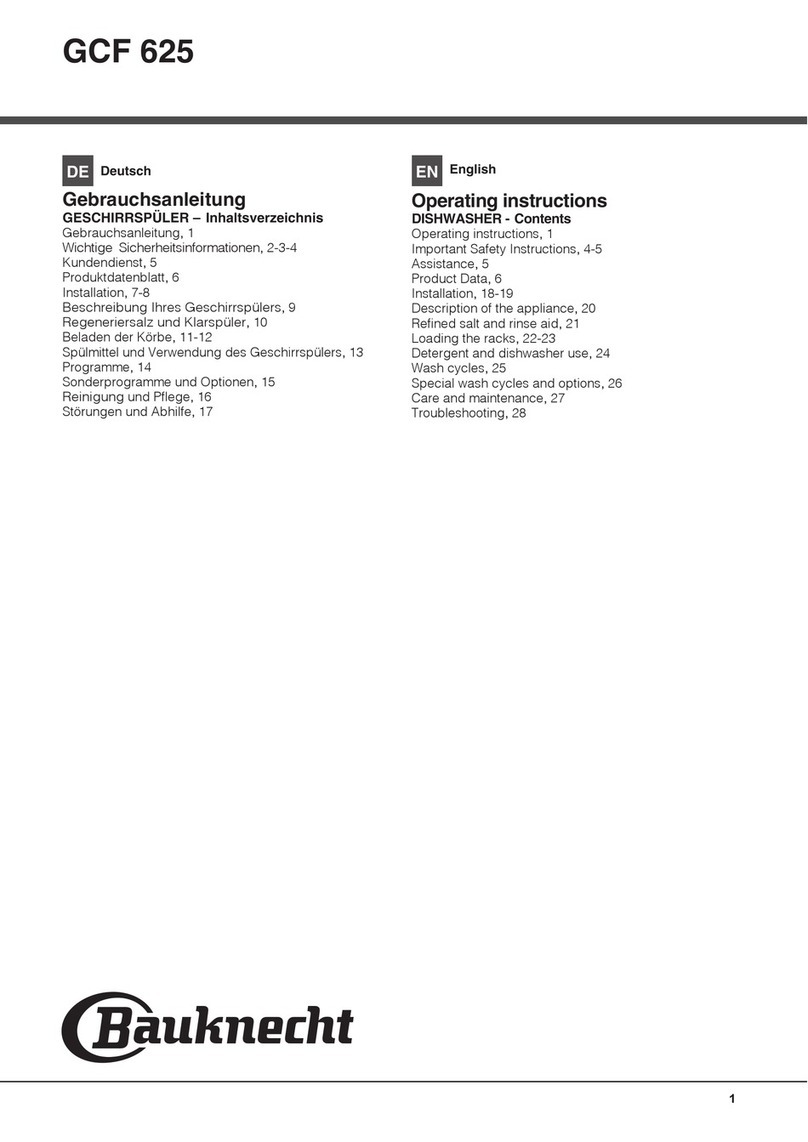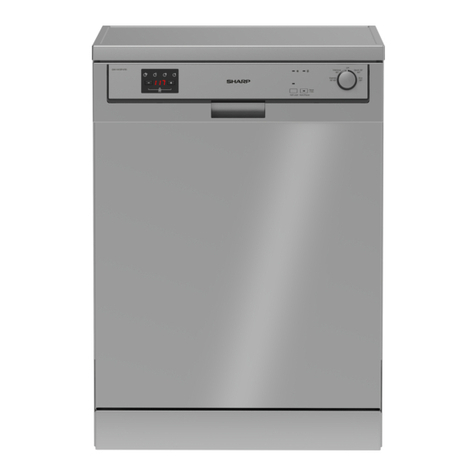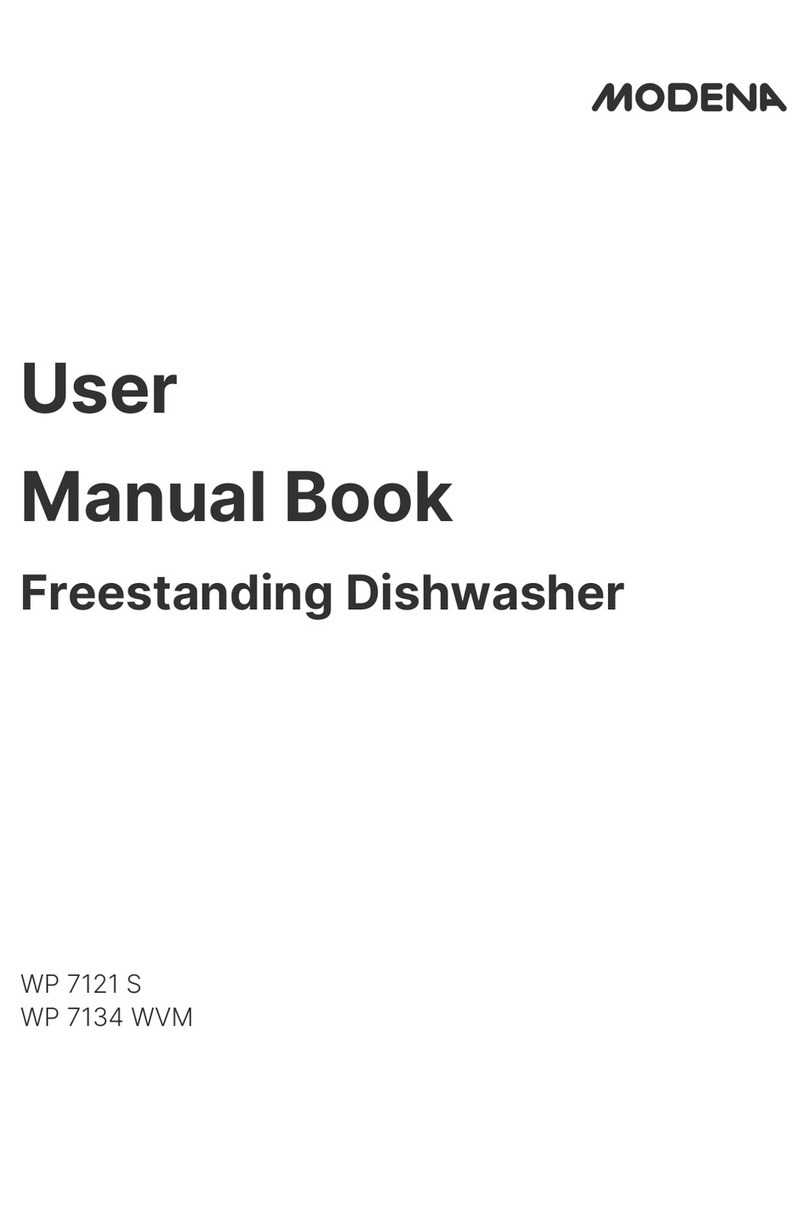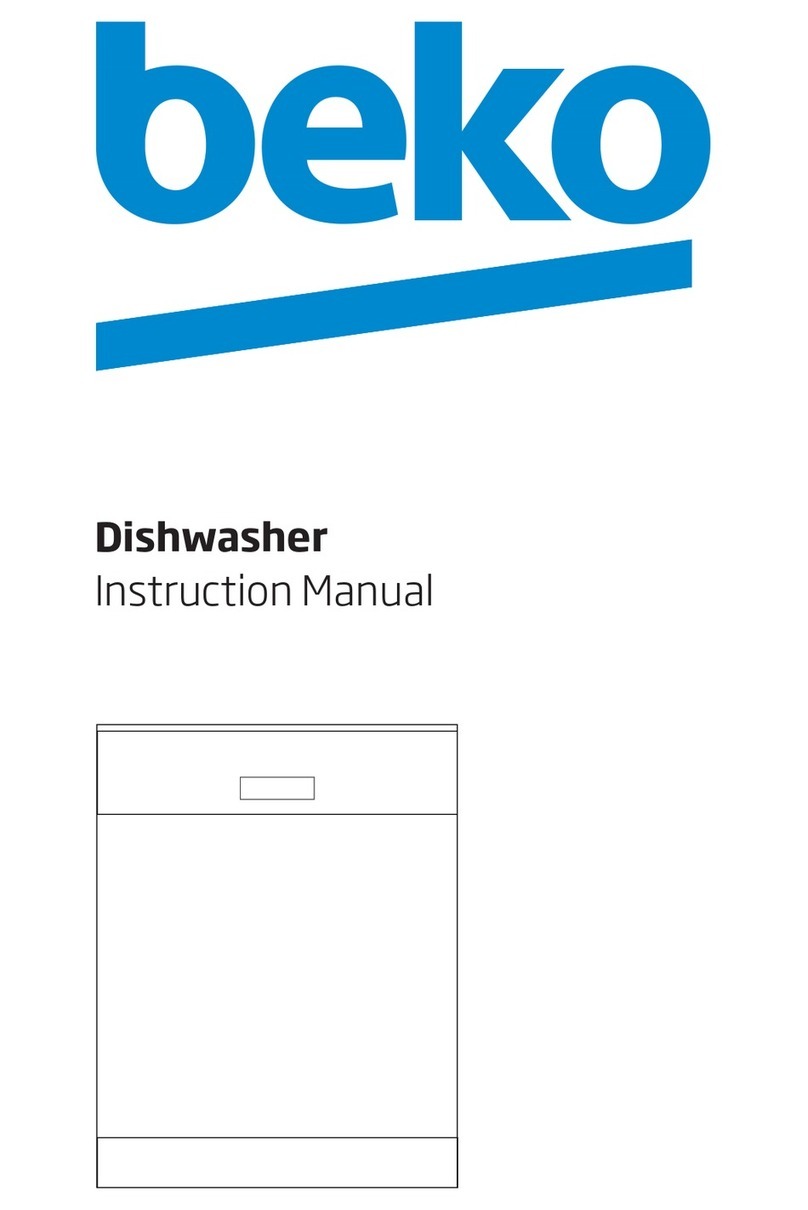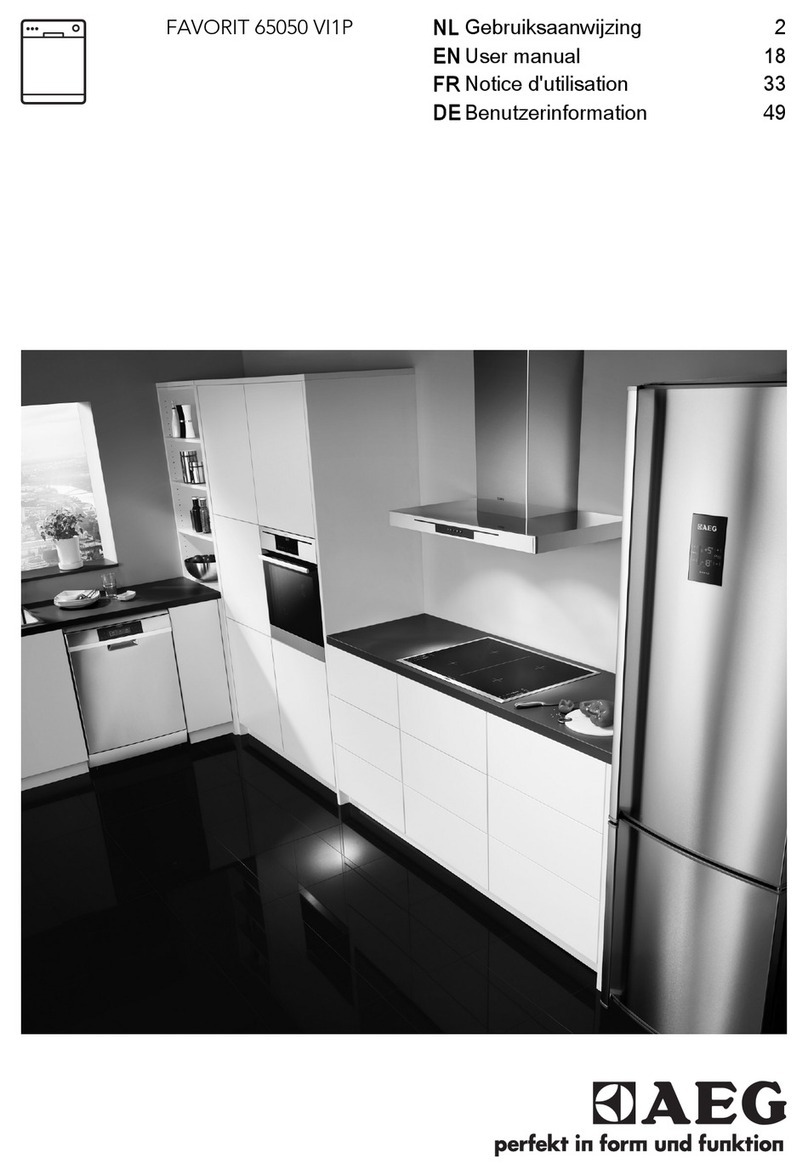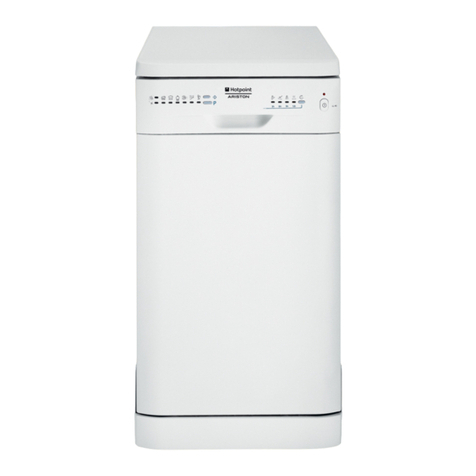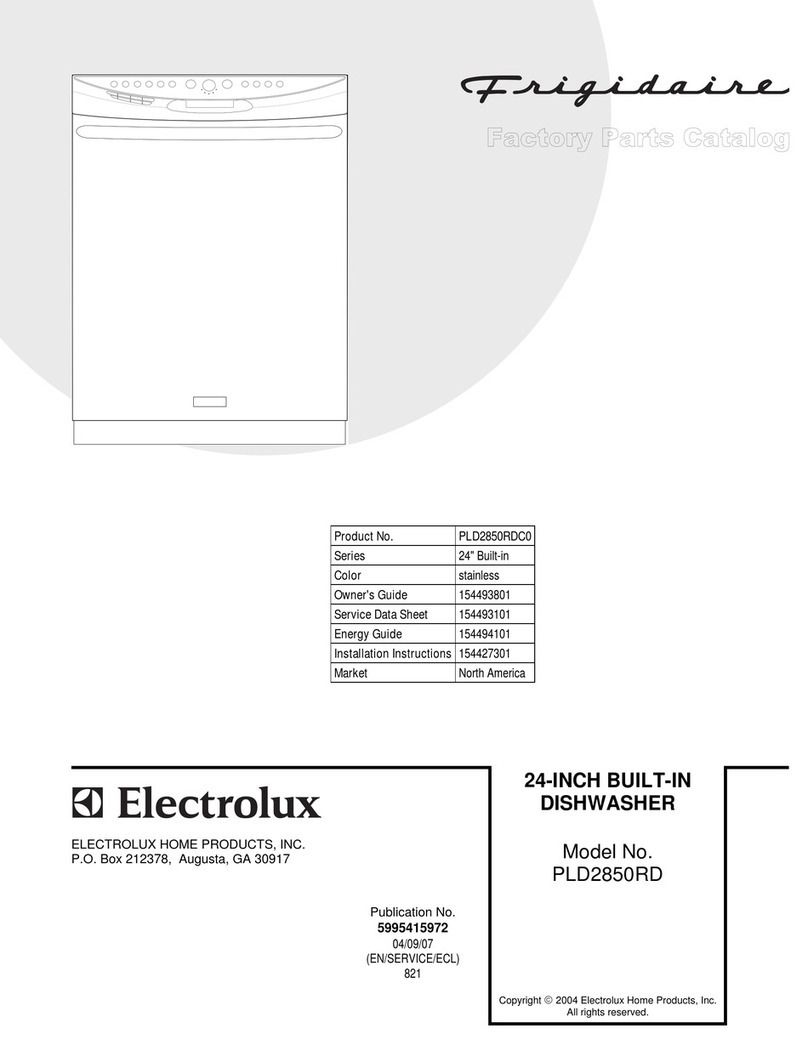
Before washing for the
first time
Checking water hardness
Contact the local water utility to check the water hardness in your
area. This is important with regard to how much detergent and
rinse aid to use.
Top up with rinse aid
By using rinse aid you will improve your drying result. You will
also achieve a better dishwashing result with glassware and
dishes.
1 Open the rinse aid compartment lid.
2 Carefully top up with rinse aid. Only add rinse aid to the level
marked max.
3 Wipe up any splashes of rinse aid around the compartment.
4 Close the lid firmly.
Refill rinse aid indicator
When the rinse aid needs topping up, the above symbol lights
on the display.
NOTE!
After topping up, it may take a while before the symbol goes
out.
Setting the rinse aid dosage
The section Settings describes how to set the rinse aid dosage.
Rinse aid dispensing can be set from (Off) to (High
dose). (Factory settings: )
Increase the rinse aid dosage:
•If the dishes have water marks.
Decrease the rinse aid dosage:
•If the dishes have a sticky white/blue film.
•If the dishes are streaked.
•Build-up of foam. If you have very soft water, the rinse aid can
be diluted 50:50 with water.
For water with a hardness greater than 10–12 °dH, you ought to
use rinse aid with citric acid (known as acid rinse aid).
Loading the dishwasher
Economic dishwashing
Run programs only with a full load
Wait to run a program until the dishwasher is full. This way you
save energy. Use the Rinse & Hold program to rinse the dishes
if there are any unpleasant odours while you wait for the dishwash-
er to become fully loaded.
Run programs at a lower temperature
If the dishes are only slightly dirty, you can select a lower temper-
ature with certain programs. See also the section Selecting Op-
tions in the chapter Using the dishwasher.
Select a program with the option Short dry
To save energy, use Short dry. The drying result will be better if,
once the program is finished, you leave the door slightly open.
Do not rinse under running water
Simply scrape off large food particles before loading the dish-
washer.
Choose a green detergent
Read the environmental declaration on the packaging!
Connect to cold water...
If you use oil or electricity to heat your home.
Connect to hot water (max. 70 °C)...
If you use district heating, solar power or geothermal power to
heat your home. Choosing a hot water connection cuts program
times and reduces the dishwasher's electricity consumption.
Fragile dishes
Some cookware is not dishwasher safe. This can be for several
reasons. Some materials cannot withstand strong heat, others
can be damaged by dishwashing detergent.
Fragile decoration
Porcelain with decoration on top of the glazing (the items feel
rough) should not be washed in a dishwasher.
Crystal/Glass
Place items so that they do not touch each other during the wash.
Use a short program with the lowest possible wash temperature.
Select Short dry. Delicate and very fragile items should not be
washed in a dishwasher.
Glassware washed in a dishwasher at high temperatures can
gradually develop a grey film that cannot be removed. Wash fine
glassware at a low temperature and with a small amount of deter-
gent.
Silver
Silver and stainless steel items should not come into contact, as
the silver can become discoloured.
Cutlery with glued handles
Some types of glue are not dishwasher safe. In such cases, the
handles may loosen.
Wood
Wooden items should only be washed in a dishwasher if marked
dishwasher safe.
Aluminium
Aluminium can lose its shine if washed in a dishwasher. However,
good quality aluminium pans can be washed in a dishwasher,
even if some of the shine will be lost.
Plastic items
Avoid washing plastic items that cannot withstand high tempera-
tures.
4
